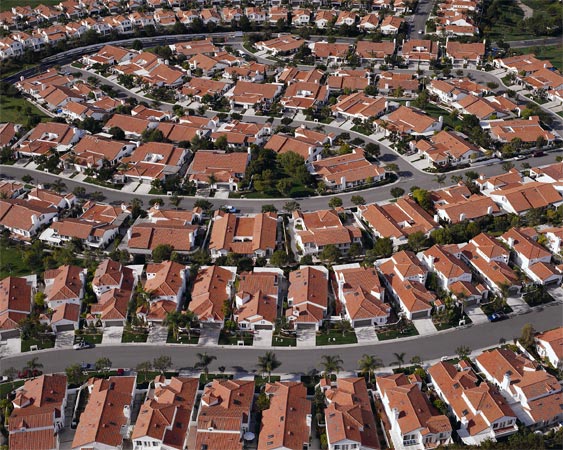
As the debate over SB 50 and other state legislative efforts to boost California’s housing supply heats up, it’s worth reviewing some of the data about how dire the housing situation is in the state. Here are some tidbits:
High Home Prices and Rents:
- According to the California Legislature’s Legislative Analysts Office, the average California home costs about two-and-a-half times the average national home price, at $440,000 (and much higher in major metro areas). This price divergence began in the 1970s, when California home prices went from 30 percent above U.S. levels in 1970 to more than 80 percent higher by 1980.
- Per the California Department of Housing and Community Development (HCD), the majority of California renters (more than 3 million households) pay more than 30 percent of their income toward rent, while nearly one-third (more than 1.5 million households) pay more than 50 percent of their income toward rent.
- Per a Hope Center for College, Community, and Justice study, 19% of community college students in California are homeless, while 60% are considered “housing insecure.”
- Almost one-quarter of all homeless people in the country live in California, according to federal data.
Extreme Housing Shortage Relative to Demand:
- California ranks 49th among all U.S. states in housing units per resident, behind only Utah, where residents tend to have large families in single homes, per a 2016 McKinsey study. The McKinsey analysis showed that California has 358 homes per 1,000 people, whiles comparable states like New York and New Jersey have more than 400 homes per 1,000 residents.
- HCD calculated that the state needs to build 180,000 additional homes annually, but over the last ten years housing production has averaged fewer than 80,000 new homes each year (and is currently declining).
Local Zoning is a Key Barrier:
- While the 2016 McKinsey study presented a goal of 3.5 million units needed to address the shortage and stabilize prices, UCLA’s Lewis Center found that California cities and counties currently only zone for a combined 2.8 million new housing units. And many of these zoned parcels are located in rural areas far from jobs, which is not where housing is needed.
- The New York Times recently mapped the local zoning in some major cities and found that 75 percent of Los Angeles and 94 percent of San Jose is zoned exclusively for single-family homes.
- UC Berkeley’s Terner Center documented via a statewide survey of local governments that in two-thirds of California’s cities and counties, multifamily housing (i.e. apartments) is allowed only on less than 25 percent of the available land.
- The Terner Center similarly showed that fully one-half to two-thirds of all land in California is reserved exclusively for single family homes.
- In 1933, according to University of Texas’s Andrew Whittemore, less than 5 percent of Los Angeles’ zoned land was restricted exclusively restricted for single-family homes. By 1970 though, half of the land in Los Angeles was zoned only for single family residences, per UCLA’s Greg Morrow.
- Morrow noted that zoning in Los Angeles went from allowing up to 10 million residents in 1960 to 3.9 million residents by 1990.
Local Permitting Processes Remain a Major Barrier:
- The Terner Center estimated that local permit and impact fees on new units average $150,000 per unit.
- Environmental review under the California Environmental Quality Act (CEQA), triggered when local governments make permitting decisions discretionary as opposed to ministerial, ranked as the ninth biggest barrier to housing overall, according to the Terner Center survey of planners.
- The Rose Foundation found that CEQA litigation affects fewer than 1 out of 100 projects not already exempt from the law, while litigation has been steady at about 195 lawsuits per year on average since 2002.
These numbers on California’s housing crisis show not only the human cost of the shortage, but the need for a strong policy response to fix the governance system that exacerbates the problem. We’ll see if this legislative session brings any change.
The California Preservation Foundation is hosting a webinar debate today from 11am to noon on the housing shortage, entitled “Point-Counterpoint: Streamlining Housing Development vs Local Control.” I’ll be on the pro-housing side against a few prominent “local control” anti-housing advocates.
Moderated by Diane Kane, PhD (Emeritus Trustee at the California Preservation Foundation), the panelist debaters include:
- Barbara Bry, City Councilmember, City of San Diego
- Todd David, Executive Director, San Francisco Housing Action Coalition
- Ethan Elkind, Director, Climate Program, Center for Law, Energy & the Environment, U.C. Berkeley
- Dennis Richards, Planning Commissioner, City of San Francisco
The questions will cover issues like CEQA’s effect on housing production, NIMBY motivation, how historic preservation affects the shortage, and if single-family homes are inherently a ‘bad’ thing.
You can register here (registration is $40 for members and $60 for non-members) to join the webinar and ask your questions of the panelists.
How has the city of San Francisco changed in the last decade, and what will it look like in the future? On tonight’s City Vision, I’ll host John Rahaim, Planning Director for the City and County of San Francisco, to discuss these questions.

In his 12 years leading the Planning Department, John has tackled issues ranging from the housing shortage to sea level rise. How have politics and environmental regulations impacted urban development in San Francisco? And how is the city managing growth while addressing climate change, transportation infrastructure, and racial equity?
Tune in at 7pm tonight or stream live. You can join the conversation by calling 866-798-TALK or e-mail or text us at cityvisions@kalw.org. You can also reach us by tweeting us at @cityvisionskalw.
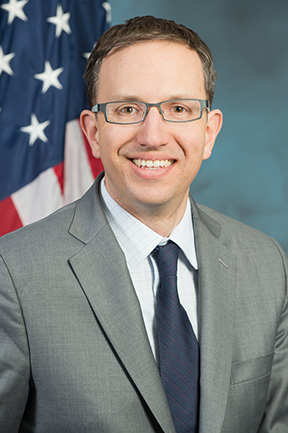
In response to the state’s severe housing shortage, California legislators have been quietly strengthening its housing mandate process for local governments. I’ll discuss the new policies and what the future will bring on a webinar today at noon with outgoing California Department of Housing and Community Development director Ben Metcalf.
Metcalf’s agency takes the lead in assigning housing goals to each region of the state. Those regional entities in turn assign housing allocation numbers to local governments in the jurisdiction, which must plan for this new housing in four-year cycles.
Until recently, the process was easily gamed by local governments, with no penalties for non-compliance. But legislators have now added significant enforcement powers.
As examples of this beefed-up process, the state now requires streamlined local approval for housing projects in jurisdictions that are not producing enough housing according to these mandates. The state has also been linking transportation funding to local compliance. And perhaps most prominently, Governor Newsom is suing local governments like Huntington Beach for its inaction.
To learn more, you can register this morning for the noon-1pm webinar, which is co-sponsored by the California Lawyers Association and the Council of Infill Builders. MCLE credit is available for attorneys, and registration is free for members of the Council of Infill Builders. Hope you can join!

As I began researching the history of the Los Angeles Metro Rail system for my 2014 book Railtown, one particular aspect of the rail transit story shocked me. No, it wasn’t the petty political squabbles, short-sighted civic leadership, or selfish parochialism that slowed, weakened and sometimes stymied the development of a functional rail system in Los Angeles. It was the shocking price tag of building rail transit — particularly tunneling under busy city streets — and the absurd amount of time (decades in some cases) to dig tunnels that more than a century ago were done in a fraction of the time it takes today.
Like the rest of the United States, Los Angeles suffers from exorbitant costs and delays with tunneling. The 1.9 mile Regional Connector light rail tunnel under downtown, for example, will cost almost $1.7 billion and take at least 8 years to complete. Nationwide, as transit expert Alon Levy has documented, tunneling costs are out of whack even compared to other developed nations, with New York City’s $2.6 billion-per-mile Second Avenue subway as a particularly gruesome transit horror story.
So I was intrigued this past December when I learned that Elon Musk’s Boring Company was unveiling a demonstration tunnel in Hawthorne, California, that could be built quickly and at a fraction of the cost. How cheap? 1.14-mile for just $10 million, with potential long-term improvements in speed of up to 15 times over the current rate.
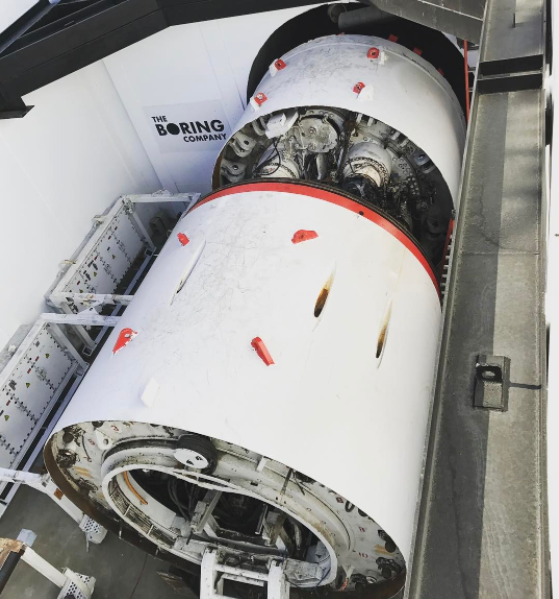
Many urbanists sneered, deriding the tunnel as nothing more than a sewer pipe and mocking the idea of a “tunnel for Teslas” as simply recreating the failed surface roadway patterns of the present — or worse, catering to the wealthy by allowing them to avoid the congestion caused by the plebeians above.
Many of these same urbanists already resented Musk for his work with Tesla, a company which promotes a vehicle technology that they rightly identify as destroying our urban fabric, while he also (ironically) works to remove one of the arguments against cars by eliminating their tailpipe pollution.
But what if Musk and his rocket scientists from SpaceX really could bring down the cost and time of tunneling? Imagine the transit projects that could ensue. I’ll offer four, just here in California alone:
- A subway under Wilshire Boulevard in Los Angeles, the densest corridor west of the Mississippi, while Metro, the public agency currently trying to build one, is mired in a decade-long, multi-billion dollar slog.
- A subway connecting West L.A. with Sherman Oaks and the San Fernando Valley underneath the dreaded Sepulveda Pass and the freeway parking lot known as “The 405.”
- A second Bay crossing connecting Oakland and San Francisco to address congestion on BART and possibly allow one-seat train service from San Francisco to Sacramento.
- A tunnel connecting San Francisco to Los Angeles and San Diego, completing the dream of the flailing high speed rail project.
Those four projects alone would make any California urbanist happy. Yet how seriously can we take the Boring Company’s claims regarding decreased tunneling costs and time?
I took a tour of the test tunnel in Hawthorne last month to try to gain more clarity on how the company is reducing tunnel costs. Three things stood out:

- The Dirt. Believe it or not, what to do with the dirt that comes out of tunnels is a big limiting factor. I heard this first-hand from the tunneling experts working on the Regional Connector project under downtown Los Angeles. Yet the Boring Company may have found something simple and innovative to do with that dirt: turn them into functional bricks. To prove their point, they built a Monty Python-style tower out of the bricks on site. If the bricks can be given away for free, it will greatly reduce costs. If they can sell the bricks for use in things like sound walls, they say they could actually make money on the tunnel (see the picture above and video below of the dirt brick-making process).
- Private funding incentives. The Boring Company is envisioning a privately funded network of tunnels throughout California and beyond. They are not necessarily contemplating bidding on large public sector contracts. As a result, the company appears to have incentives to cut costs in ways that some of the few big tunneling companies competing for select large public contracts may not. As an example, the company can save costs simply in terms of where they manufacture the tunnel’s concrete segments relative to the tunnel, a cost-saving step that they say the big tunneling contractors aren’t financially motivated to take.
- Lots of little things. There appears to be no one single leap forward with the Boring Company machine. But instead, the company’s leaders say they’ve managed a series of smaller innovations that combined together could help reduce the costs dramatically. Perhaps most significantly, the tunnel bore has a smaller diameter than many rail tunnels because they don’t need the wiring and infrastructure that a train needs, but it’s still large enough to fit a vehicle with the carrying capacity of a subway train. Their vision is to run battery-powered, autonomous vehicle platforms in the tunnels, rather than hard wire expensive rail cars. It’s a vision of where technology is heading that could eventually lead to existing rail transit being converted to autonomous, battery-powered, platooning shuttles, which could carry the same passengers as rail but for a fraction of the capital and operating costs.
In any event, we’ll soon see if these company claims are accurate, as the Boring Company appears ready to work on a tunnel under the Las Vegas convention center soon.
And while urbanists fret about the potential for expanded subterranean capacity for solo drivers, there’s no reason that the technology would only be employed for that use and couldn’t scale to the level of current public rail transit. The company sees Model X battery-powered platforms seating between 16 and 32 passengers traveling up to 165 miles per hour through LED-lit tunnels. And with five boring machines in action, they think they could reach San Francisco in just a year. That vision — though of private and not public transit — would only bolster urbanist goals of car-free living in more dense, transit-oriented communities.
A big limiting factor though, beyond the technology, may be permitting. Environmental review under the California Environmental Quality Act (CEQA) may slow this deployment. Under the law, permitting agencies will have to study and mitigate environmental impacts ranging from paleontology to induced land use changes and traffic at the surface entry points to the tunnel. We’ll see how that process plays out, if the Boring Company starts moving forward on a project in California.
But if Musk and his crew have actually solved the technology and cost problem of tunneling, they will have given transit backers throughout the United States and beyond a big reason to celebrate. Because a revolution in tunneling is a pipe dream worth pursuing in our increasingly urban world.
The Two Hundred is a new industry-backed group with a familiar refrain: California’s housing shortage (and overall low level of affordability) is caused by out-of-control environmental laws. The group is now suing the State of California for pursuing “racist” climate policies that they claim primarily displace people of color by driving up basic living expenses.
They have a website, some prominent civil rights advocates that have joined them, and a professional video to make the case that California’s housing production is stymied solely due to environmental review under the California Environmental Quality Act (CEQA). Specifically, they allege that the need to reduce greenhouse gas emissions under the state’s climate “scoping plan” is exacerbating environmental review by saddling new housing projects with requirements to reduce on-site energy usage and vehicles miles traveled. (They also blame high electricity costs for making the state unaffordable, as a result of mandates to procure more renewables and reduce on-site energy usage, even though these policies are enacted under separate statutes from the state’s climate law.)
Does this lawsuit have merit? No, but the group has correctly identified a major problem in California: the state is unaffordable for too many residents, almost exclusively due to high housing costs resulting from a decades-long history of under-building homes relative to job and population growth.
But the problem with their lawsuit is that they are blaming the wrong policies and decision-makers. Instead of starting by identifying what actions most constrain housing growth and affordability in the state, and then asking how the state is addressing or exacerbating these barriers, the lawsuit assumes (without evidence) that CEQA is the prime barrier to housing.
But study after study has debunked the idea that CEQA lawsuits are a major factor impeding new housing. Instead, the real culprit is restrictive local zoning and burdensome permitting processes.
So why isn’t the group suing every NIMBY-captured local government in the state for preventing housing, which drives up costs and forces long commutes? First, they probably don’t have a great legal cause of action against all these cities — or a convenient way to sue hundreds of them — whereas they can go after a state agency like the California Air Resources Board (CARB) more easily in court. Second, given their industry-backed leadership, I suspect that they don’t really care about local barriers to housing. Instead, they are exercising a longstanding beef against CEQA for its role in slowing megaprojects, especially sprawl development.
Yet the lawsuit is worth keeping an eye on, given the savvy of the industry lawyers behind it and the underlying truth of the problem they’ve identified, if not the remedy to address it.
For more information, you can watch their full anti-CEQA video here, complete with multiple Rev. Martin Luther King, Jr. references:
California ushered in a whole new way of evaluating the impacts of new projects on our transportation systems when the legislature passed SB 743 (Steinberg, 2013). The implementing guidelines are finally complete, and lead agencies will now be responsible for switching from an “auto delay” metric under the California Environmental Quality Act (CEQA) to one that measures the impacts on overall driving miles (VMT).
To discuss the implementation process, Berkeley Law’s Center for Law, Energy and the Environment (CLEE) is co-hosting a conference with Portland State University this Friday, March 1st, in Downtown Los Angeles from 8:45 to 6pm. In-person tickets are now sold out, but you can register to view it on line or watch as a webinar afterwards. The agenda is here.
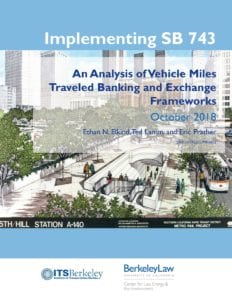
Speakers include Sacramento mayor and SB 743 author Darrell Steinberg (via video), officials from the Governor’s Office of Planning and Research, local leaders implementing innovative VMT mitigation plans, and other experts.
We’ll also discuss our recent CLEE report “Implementing SB 743” on the legal options for creating VMT mitigation “banks” or exchanges. Hope to see you there or that you can tune in live!
It took five years, but California has finally ditched an outdated and counter-productive metric for evaluating transportation impacts under the California Environmental Quality Act (CEQA). With the guidelines finalized on December 28th, a mere half-decade since the passage of SB 743 (Steinberg) in 2013, the state will ditch “auto delay” as a measure of project impacts and instead measure overall driving miles (VMT). You can see the new guidelines Section 15064.3.
It’s a big deal. Now new projects like bike lanes, offices, and housing will be presumed exempt from any transportation analysis whatsoever under CEQA if they are within 1/2 mile of major transit or decrease driving miles over baseline conditions. That means significantly reduced litigation risk and processing time for these badly needed infill projects.
 Sprawl projects, meanwhile, will need to account for and mitigate their impacts from dumping more cars on the road for longer driving distances. Berkeley Law’s Center for Law, Energy and the Environment (CLEE) explored one such mitigation option in the form of a VMT “mitigation bank” or exchange in the recent report Implementing SB 743, where developers could pay into a fund to reduce VMT, such as for new transit or bike lane projects.
Sprawl projects, meanwhile, will need to account for and mitigate their impacts from dumping more cars on the road for longer driving distances. Berkeley Law’s Center for Law, Energy and the Environment (CLEE) explored one such mitigation option in the form of a VMT “mitigation bank” or exchange in the recent report Implementing SB 743, where developers could pay into a fund to reduce VMT, such as for new transit or bike lane projects.
The one caveat is that due to political pressure, new roadway expansions are exempt from this requirement under the guidelines. It’s unfortunate, but those roadway projects will still need to undertake VMT analysis anyway for climate and air quality impacts, so perhaps they are not as exempt as their backers hoped.
You can learn more about these changes and what they mean going forward at a March 1st conference that CLEE is co-organizing in Los Angeles with the Urban Sustainability Accelerator at Portland State University. Shifting from Maintaining LOS to Reducing VMT: Case Studies of Analysis and Mitigation under CEQA Guidelines Implementing SB 743 will be a professional educational program for land use, transportation and environmental planners and attorneys in public, private and nonprofit practice, presented by expert practitioners.
- When: Friday March 1, 2019
- Where: Offices of the Southern California Association of Governments, Los Angeles
Topics to be discussed include:
- VMT impact analysis (methodology; appropriate tools and models, determining impact area)
- VMT significance thresholds (project effects, cumulative effects)
- VMT significance thresholds (project, cumulative)
- VMT mitigation strategies (project level, programmatic, VMT banks and transaction exchanges, legal and administrative framework)
Space is limited to 70 people to attend in person; registrants can view the program online streaming concurrently or subsequent to the program.
Registration Fees:
- Free Staff of state, regional and local governments sponsoring the SB 743 implementation assistance project and of their member governments (use link below for information about affiliations qualifying for free registration)
- $30 General registration, not seeking professional education credits
- $90 Planners seeking 6 AICP credits* ($15/credit)
- $210 Attorneys seeking 6 MCLE credits* ($35/credit)
*The organizer has accreditation for six hours of California Mandatory Continuing Legal Education (MCLE) credits and is seeking accreditation for six hours of AICP credits.
You can learn more about this conference here and can proceed directly to the online preregistration form here.
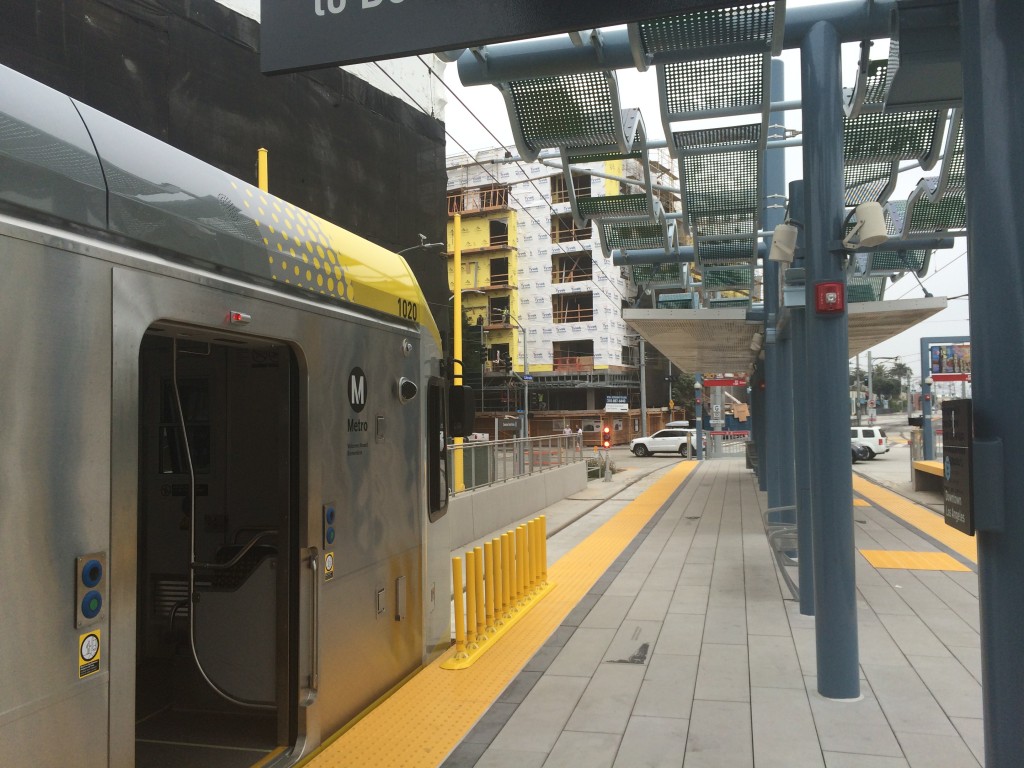 This has been a relatively eventful year in California land use, given the state’s severe housing shortage, and I’ll be speaking about it this morning at the 14th Annual “CEQA Year In Review” Conference in San Francisco. The morning panel will cover “Streamlining CEQA for Housing Approvals.”
This has been a relatively eventful year in California land use, given the state’s severe housing shortage, and I’ll be speaking about it this morning at the 14th Annual “CEQA Year In Review” Conference in San Francisco. The morning panel will cover “Streamlining CEQA for Housing Approvals.”
I’ll cover the state’s relatively lackluster effort to date to streamline environmental review for infill housing projects, which has had limited success in allowing environmentally beneficial infill projects to avoid costly and time-consuming environmental review. And as my colleague Eric Biber has found, much of the problem traces to local government decisions to make approvals discretionary for larger projects, which automatically triggers the environmental review process.
I’ll also discuss potentially promising state-level effort to require upzoning around major transit, such as this past year’s AB 2923 to upzone BART-owned parcels as well as this coming session’s SB 50 debate. But even if the state can accomplish mandatory upzoning, locals will still try to stop new projects by instituting lengthy approval processes with multiple veto points. So the next phase in the battle to address the housing shortage will probably be to limit local permitting discretion over projects near major transit.
I look forward to the discussion and hope to see you at the conference today!
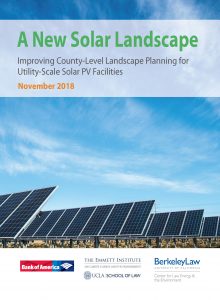 UC Berkeley and UCLA Schools of Law are today releasing a new report, A New Solar Landscape, which identifies key reforms for California to enact at the state, regional, and local level to increase the pace and optimal siting of utility-scale solar photovoltaic (PV) development. With the passage of SB 100 (de León, 2018), California now requires electric utilities to obtain 60 percent of their electricity from renewable sources by 2030 and 100% carbon-free electricity by 2045. To meet these goals, the report recommends that state leaders:
UC Berkeley and UCLA Schools of Law are today releasing a new report, A New Solar Landscape, which identifies key reforms for California to enact at the state, regional, and local level to increase the pace and optimal siting of utility-scale solar photovoltaic (PV) development. With the passage of SB 100 (de León, 2018), California now requires electric utilities to obtain 60 percent of their electricity from renewable sources by 2030 and 100% carbon-free electricity by 2045. To meet these goals, the report recommends that state leaders:
- Encourage development of county-level landscape plans by linking them to incentives like expedited review under the California Environmental Quality Act.
- Ensure that project benefits flow first to communities most immediately affected by development.
- Increase support for transmission infrastructure located in areas appropriate for solar development.
- Create a consolidated, statewide zoning and planning data resource.
The report is sponsored by Bank of America and informed by two expert stakeholder convenings facilitated by the law schools.
Utility-scale solar PV facilities—large panel arrays that generate power to sell into the electrical grid—are the most economical method of delivering the large quantities of power needed to satisfy California’s renewables portfolio standard (RPS). Solar energy is the most significant source of renewable energy in California, accounting for over one-third of all renewable power generated in 2017, and well over half of total generating capacity. As solar prices continue to fall, many experts agree that solar will play an even greater role in California’s achievement of future renewables targets, potentially constituting up to 95 percent of new generation.
But these projects, often located in rural areas, can face significant barriers to obtaining the local approvals necessary to begin development, potentially hindering climate progress. To address issues such as a lack of local buy-in to proposed projects and a lack of coordination among local and state planners, the report proposes policies such as:
- Quantifying the total amount of land needed for solar PV facilities in order to meet the state’s climate goals, and communicating this information to local communities where the facilities might be located;
- Preparing solar PV permitting guidebooks that clarify local requirements for developers and help residents understand the process;
- Increasing coordination between state and utility electrical transmission planners and local governments responsible for project approvals; and
- Encouraging community benefit agreements that guarantee local benefits in connection with new solar PV developments.
These recommendations, among many others described in A New Solar Landscape, can help California’s policymakers, local governments, and solar industry leaders develop a county-level landscape planning system that accounts for and promotes state renewable energy targets, environmental conservation and land preservation goals, and community development needs.
For more details, download the report here.


